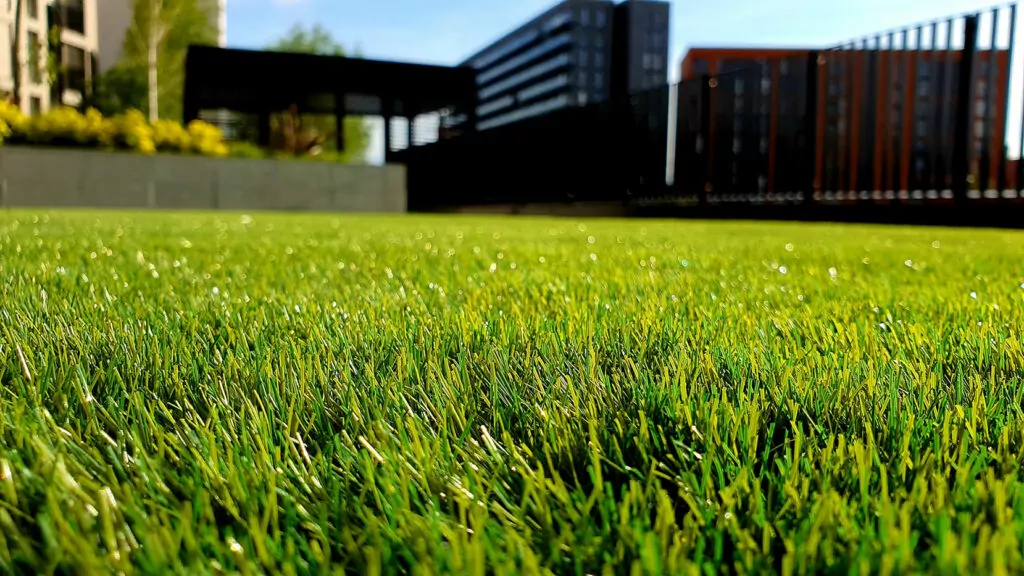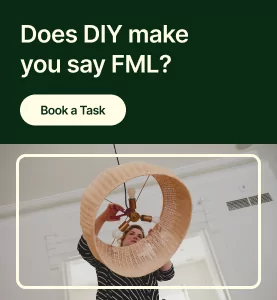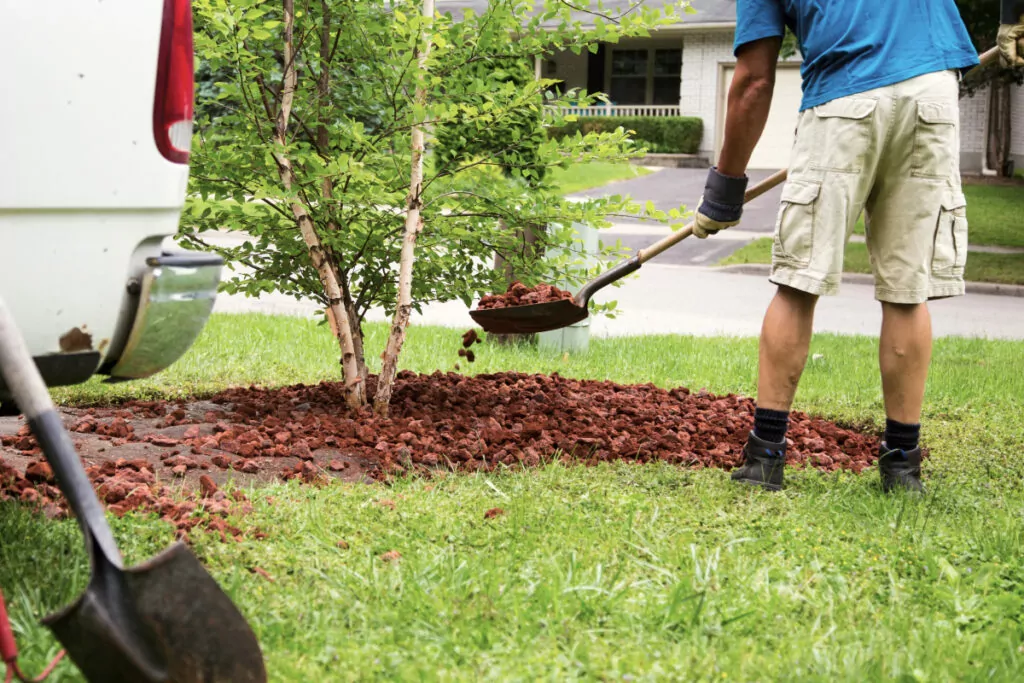Healthy lawns beautify the area outside a home, promote feelings of relaxation, increase oxygen levels, absorb noise, and reduce outdoor temperatures. They provide a safe cushion for sports and outdoor activities, and increase homeowners’ property value.
Despite there being many good reasons for homeowners to maintain their lawns, many of them just don’t have the time, tools, or skills to do it themselves. This is where Taskers come in.
When it comes to lawn care, top Taskers recommend starting with mowing. Most people think that mowing’s main function is to keep a lawn looking nice. While that’s certainly true, it also helps keep lawns healthy by promoting:
- Stronger grass: When grass is cut at the correct height, healthy grass shoots flourish while weaker ones don’t. When a lawn’s grass is trimmed, healthier grass roots grow, which results in a healthier and more lush lawn over time.
- More growth: Regular mowing prevents uneven lawn growth. When grass is regularly cut to a uniform level, the lawn absorbs nutrients from water and sunlight evenly.
- Fewer pests: An overgrown lawn is more hospitable to insects and rodents because of weeds and tall grasses. Regular mowing means fewer pests and disease.
- Nourishing mulch: Through a process called grass cycling, cut grass returns many much-needed nutrients and nitrogen to a lawn after mowing.
Most people are surprised to learn about these benefits. As a Tasker, you can communicate the importance of lawn mowing to your clients. They’ll likely take this task more seriously (and perhaps book you again in the future).
Steps To Mowing A Lawn
Mowing looks simple, but there’s more to it than meets the eye. Read the Tasker-sourced tips below to get started:
- Clear the area: There should be no children, pets, or debris on the lawn. Branches, twigs, rocks, or leaves could jam your mower, so these should be removed.
- Protect yourself: Top Taskers recommend wearing safety goggles, gloves, and long pants to protect yourself from debris/clippings. Sturdy closed-toe shoes will ensure that your feet are protected at all times while wearing sandals can be a huge safety hazard. Ear muffs will protect your ears from loud mower noise. Note: Since your ears will be covered, it will help to remain vigilant of young children or pets re-entering the area. It can also help to apply sunscreen, wear a hat, and drink water to stay hydrated.
- Start with the perimeter: Mow around the outside of your lawn, around trees, and around any curved edges. This will give you a squared off area that will be easy to mow.
- Mow back and forth in straight lines: Start from one edge and mow in a straight line to the opposite end. When you turn back around, make sure there is a slight overlap with the previous mow line for a clean cut.
- Finish up with a string trimmer: A lawn mower may miss some wall-adjacent edges and corners. A string trimmer is useful for taking care of these areas afterwards.
Best Practices
There’s no one-size-fits-all approach to mowing. Lawn characteristics like types of grass and growing patterns can vary based on season, climate, and geography. However, here are some tips from top Yard Work Taskers that can make any mowing task easier.
- The 1/3 Rule: You should never cut more than one-third of the height of your client’s grass. Cutting below this point will injure the grass, resulting in loss of nutrients and stunted growth, and leave their lawn vulnerable to pests and disease. The end result is a weakened, brown lawn. The “1/3 Rule” applies to both short and overgrown grass. Explaining this to your client may help you secure recurring business for mowing tasks.
- Mow when grass is dry: Wet grass clumps together and may clog your mower. Lawns are usually wet in the morning from fog or dew and midday temperatures are often too high, so the best time to mow a lawn is early evening (be sure to let your client know!).
- Mowing patterns should be varied: Grass leans in the direction that it is mowed. To ensure that grass remains upright over time and doesn’t develop ruts, speak with your client to understand how it was mowed previously—then mow it in a different direction.
- Discharge clippings in a previously cut row: This will ensure that you don’t mow over them again and risk clogging your mower or dulling the blade. Leaving grass clippings on the lawn will break down quickly and return nutrients to your client’s soil.
- Mow higher under trees: Grass in these shaded areas competes with tree roots for water and nutrients, so leaving them a bit taller helps them survive.
- Do not mow uphill: If there is a slope, mow perpendicular to the slope angle. Do not mow up or down the hill as you may risk falling and/or injury.
- Sharpen mower blades regularly: A sharp blade will result in clean-cut grass. A dull blade, on the other hand, will tear grass open and make it more susceptible to disease. A lawn mower blade sharpening kit usually costs around $10.
Tools
To complete a mowing task properly, it’s recommended by top Taskers that you have a particular set of tools (some of which clients might own, but this isn’t always a given). As always, clear and upfront communication before a task will go a long way. It’ll help you scope a task to understand both what’s expected of you and what to bring to the task site.
For information about Yard Work tasks in general (i.e. not just mowing), including the tools and equipment that will best help you complete the task, learn more from our intro post about this skill. Materials that will specifically help you complete mowing tasks can be found below:
- Lawn mower: This may go without saying, but the type of lawn mower to use for a task is a matter of personal preference. If you don’t want to or are unable to purchase a lawn mower, you can rent and expense tools for a particular task (learn more from this blog post). However, many Taskers find that buying a mower is a great investment and pays for itself; mowing is a very popular task, and many clients expect Taskers to bring their own mower!
- Manual reel mowers: These are the most basic option. They’re affordable, environmentally friendly, and work well for small, flat lawns.
- Gas-powered walk-behind mowers: These are the most common, and are suitable for lawns up to 0.5 acres in size.
- Electric push mowers: These are more expensive than gas models, but they are quieter and cheaper to operate.
- Riding mowers: These are the quickest and certainly the best choice for lawns over 0.5 acres in size. However, they may not be practical for most Taskers considering how expensive they are and how difficult it is to transport them.
- String/lawn trimmer: This will help you address hard-to-reach spots that lawn mowers can’t get to. Turn this on its side to use as an edger that can be used along driveways or paths.
- Protective gear:
- Gardening gloves
- Safety goggles
- Long pants
- Sturdy closed-toe shoes
- Earmuffs to protect against loud sounds
- Sunscreen
- Hat and/or sunglasses
- Water to stay hydrated
- Truck or trailer (optional): While not all Taskers have one, a truck is useful for transporting large equipment like lawn mowers to and from tasks. If you happen to own one, it may be helpful for Yard Work tasks like mowing or waste removal.








